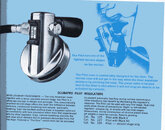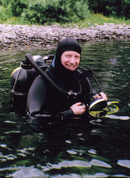Hi Akimbo,
I agree with your statements and this is a great subject. But to the typical recreational and even most tech divers (with dives measured in hours) the actual WOB is of a lot less importance than the perceived WOB.
The typical diver will not have any feeling of the actual WOB and we tend to get a lot more fatigued by the heat loss from being submerged than most anything else (unless we are swimming hard).
It is interesting what you are saying about drysuit and WOB. I would like to learn more about that. Do you have any references?
Vintage hard-hat divers used keep the "collapse plane" low enough to have zero differential pressure inside the upper part of their suit. At least that is my understanding (I have only dove a Navy MK-5 a few times, so I have minimal knowledge).
Several decades ago I worked with an engineer, who used to work in diving research at Westinghouse, near Annapolis, Md. He had a patent for a zero differential pressure dive suit. It was probably an idea ahead of its time and I have never heard about since then.
I agree with your statements and this is a great subject. But to the typical recreational and even most tech divers (with dives measured in hours) the actual WOB is of a lot less importance than the perceived WOB.
The typical diver will not have any feeling of the actual WOB and we tend to get a lot more fatigued by the heat loss from being submerged than most anything else (unless we are swimming hard).
It is interesting what you are saying about drysuit and WOB. I would like to learn more about that. Do you have any references?
Vintage hard-hat divers used keep the "collapse plane" low enough to have zero differential pressure inside the upper part of their suit. At least that is my understanding (I have only dove a Navy MK-5 a few times, so I have minimal knowledge).
Several decades ago I worked with an engineer, who used to work in diving research at Westinghouse, near Annapolis, Md. He had a patent for a zero differential pressure dive suit. It was probably an idea ahead of its time and I have never heard about since then.






